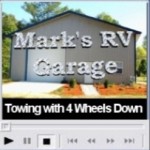 I get asked lots of questions about towing a vehicle behind a motorhome, but perhaps the most common is “How do you know what vehicles can be towed with 4-wheels on the ground?” It’s not that complicated, but it does require some research. Today I am offering some tips on towing with 4-wheels on the ground.
I get asked lots of questions about towing a vehicle behind a motorhome, but perhaps the most common is “How do you know what vehicles can be towed with 4-wheels on the ground?” It’s not that complicated, but it does require some research. Today I am offering some tips on towing with 4-wheels on the ground.
Watch the Tips for Towing with 4-Wheels on the Ground video
You basically have three options when it comes to towing a vehicle behind your motorhome. You can tow the vehicle with all four-wheels up using a car trailer, with two-wheels up using a tow dolly, or with all four-wheels down, which is what we will be discussing in this article.
In recent years towing with all four-wheels down, using a tow bar, has become more and more popular. Some of the reasons for its growing popularity are the ease of hitching and unhitching, not having to deal with a trailer and the fact that more automobile manufacturers are building vehicles that can be towed with four-wheels on the ground without modifications.
Note: It’s important that you understand all of the options available to you and that you take the time to research what method is best suited for you. There are many things to consider like the overall cost involved with the method you choose, weights, aesthetics, supplemental brakes, difficulty in hooking up and unhooking, vehicle modifications, warranty and more.
What Vehicles Can I Tow With Four-Wheels Down?
Before you make the decision to tow a vehicle with all four-wheels down you need to do your homework. There are some manufacturer approved vehicles that can be towed without any modifications to the drive-train or transmission, but there are a lot more that will require some type of modification to tow it with all four-wheels on the ground. There are many factors involved such as automatic transmissions, two-wheel drive vehicles, four-wheel drive vehicles, the type of transfer case and more.
Many vehicles with automatic transmission cannot be towed with all four-wheels down unless it is four-wheel drive, and even then it requires a transfer case that can be shifted into neutral. Front wheel drive vehicles with manual transmissions and most four-wheel drive vehicles with a manual transfer case are among the best choices for towing with all four-wheels down. Even if you have a vehicle that can be towed with all four-wheels down it’s quite possible that it will have towing speed and/or mileage restrictions. So where do we start?
Start by reading your vehicle owner’s manual to determine if the vehicle can be towed without any drive-train modifications. If the vehicle is approved by the manufacturer to be towed with all four-wheels down the owner’s manual will provide specific instructions on the proper procedures to use when towing. If the manual does not provide specific instructions on whether or not it can be towed with all four- wheels down, or if you’re unclear about any towing restrictions check with the vehicle manufacturer. Don’t hesitate to contact the vehicle manufacturer to get specific information about towing a vehicle. Your vehicle warranty could be voided from damage caused by towing a vehicle and not following the manufacturer’s guidelines. Do not rely on what a vehicle salesperson tells you. Almost all vehicles approved to be towed with all four- wheels down will include this information in the vehicle owner’s manual.
If you don’t already have a vehicle to tow a good resource to check on what vehicles can be towed with all four-wheels down is http://www.motorhomemagazine.com/ . As a service to its readers each year they publish a “Dinghy Towing Guide.” Keep in mind that this is only a guide and it is your responsibility to make absolutely sure the vehicle you are considering towing can be towed with all four-wheels down, with no drive-train modifications, before you make a purchase or actually tow the vehicle.
Note: Information in the guide is subject to change at any time! Always check the vehicle by year model too. Just because you could tow a certain model with all four-wheels down one year doesn’t mean every year model for that vehicle can be towed with all four wheels down. The vehicle manufacturer is the final authority.
The Dinghy Towing Guide includes manufacturer approved vehicles for towing without modifications that can be towed at speeds of at least 55 MPH and for distances of at least 200 miles without any special procedures. Pay particular attention to any speed or distance restrictions that could ultimately affect your vehicle warranty. Also pay attention to the restrictions and special instructions listed in the footnotes. The guide lists other valuable information like vehicle curb weights, fuel economy and base retail prices. Keep in mind the lighter the vehicle the better it is. It is easy to exceed a motorhomes receiver weight rating and the Gross Combined Weight Rating (GCWR). Note also that some models listed in their four- wheel drive version can be towed without modifications, but their two-wheel drive version of the same model cannot be towed with four-wheels on the ground.
Be sure and follow any special towing instructions or procedures found in the vehicle owner’s manual. You might be required to remove a certain fuse before you tow the vehicle, or to stop towing after so many miles and start the vehicle to allow drive train components to be lubricated. Following any and all special instructions can save you money and protect the vehicle warranty.
There are many reasons why some vehicles are not approved by the manufacturer to be towed with all four-wheels down. It may be that the vehicle will not track or follow the motorhome properly, or maybe a component in the drive-train could be damaged, and sometimes it is because of liability and warranty concerns. Another reason is the expense involved for a manufacturer to test and approve vehicles for towing with all four-wheels down.
The good news is, in many cases where vehicles are not approved by the manufacturer to be towed with all four-wheels down they can still be towed in this method by adding some type of aftermarket accessory. The most common problem is when the engine is not running components in the drive-train that require lubrication are not being lubricated. Towing a vehicle like this can result in thousands of dollars worth of damage, and/or possibly overheat and catch on fire.
There are specialty aftermarket products and modifications available such as drive shaft disconnects and/or transmission lube pumps that can be added so a vehicle is mechanically capable of being towed without damaging the drive-train.
Remco, the towing experts, http://www.remcotowing.com/ offer a product line that adapts to approximately 80% of the vehicles in today’s market. Other good resources for products concerning towing a vehicle with all four-wheels down are http://www.blueox.us/ and http://www.roadmasterinc.com/
If for some reason the vehicle you want to tow falls in the 20% that cannot be modified for towing, for whatever reason, you still have the option of possibly using a tow dolly or a car trailer. All vehicles can be towed on a car trailer, as long as you don’t exceed weight ratings, and most front wheel drive vehicles can be towed with a tow dolly.
For more in-depth information on towing check out our Towing Behind your Motorhome DVD
Happy Camping,
Mark Polk

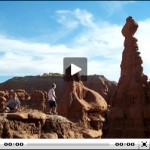
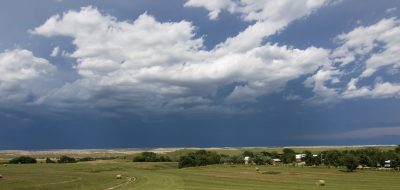
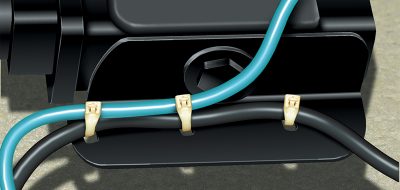

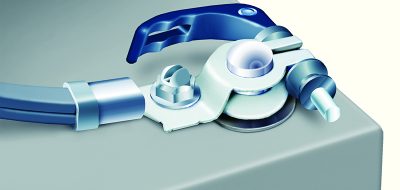
Pingback: cam girl
Pingback: The Unemployed Mom
diablo 3 bot
Why dont people understand that the reason WoW was so successful for such a long
time is that get? got the basics of an MMO down
very very well. Other MMO’s arent coping WoW but if you wish to make a game with a similar design you are pretty much forced in to looking like WoW. First person MMO almost seems impractical, and most that have ever been in a raid will vouch for that. And though Bathesda will probably try to get creative with the game the basic structure will be similar to WoW.
Ernest
I am towing a 2010 camry standard transmission, 4 wheels down, how can I stop the millage for registering on the odometer?
lawrence Rosier
It seams to me that an electric car dinghy might be better than a hybrid if the following is true. The question is can you charge the electric car batteries while pulling the EV as a dinghy? If you can then when you get to your destination you will always have a fully charged battery on your EV. Does anyone know if this can be done? I only know that the newer EVs use an AC motor because the batteries can be charged while using the brakes on the EV. A DC motor will not allow this.
Buck
Jerry, That small-minded comment of yours is totally out of line. It would appear to me that “your guy” the last 8 years was just aces. Sore loser!
Lowell Fritsche
You should mention that when you are doing your search for a vehicle and when searching through a manual it is under RECREATIONAL TOWING in the index.
That makes your search go faster. Get the manual from the salesman. He won’t know where to look and is just interested in a sale.
Lowell
Carl Stark
We have a 2008 HR Admiral, tow a 2007 Jeep Liberty (auto transmission with 4-wheel drive). We installed a Blue Ox Tow Package. In 15-months I can say WE LOVE THIS OPTION. We have been all over the country, and love the convenience of 4-wheels down. The Jeep Liberty was one of the autos in MotorHome Magazines Towing Guide. The Guide was a fantastic resource for helping me decide on which vehicle to buy as a dinghy. PS We enjoy the RVBlog very much. Keep up the good work. Carl
Fritz McDowell
Since we have such a divirsefied group of persons who are new to RV’g, this is a great article to get one started. I like to tow 4 wheels down, no trailer or dolly. To much hassle with trailers. Weight is the second thing that people should pay attention to. Thanks for the web sites, where one can get the answers to potential vehicles to tow. Fritz
Jerry
I surmise that this author must be a democrat. He used many words to say almost nothing.
Jim Lair
I was reluctant at first to make use of a “dinghy” but after a couple of trips where I had to unhook my RV and go to the store and return and hook everything back up I made the decision to get a good vehicle for towing. I selected a 2003 Jeep Wrangler with manual transmission and a Blue Ox tow bar. The Blue Ox can be hooked up without a second person having to guide you into place. I find these two to be a great combination and see a lot of other RVers pulling Jeeps as well.
A note of caution …… once hooked up you cannot back up so finding a gas station with enough room to circle through is important. I have had to unhook the Jeep only once because I misjudged the space for pulling in and then being able to pull out in the same direction. Happy towing!